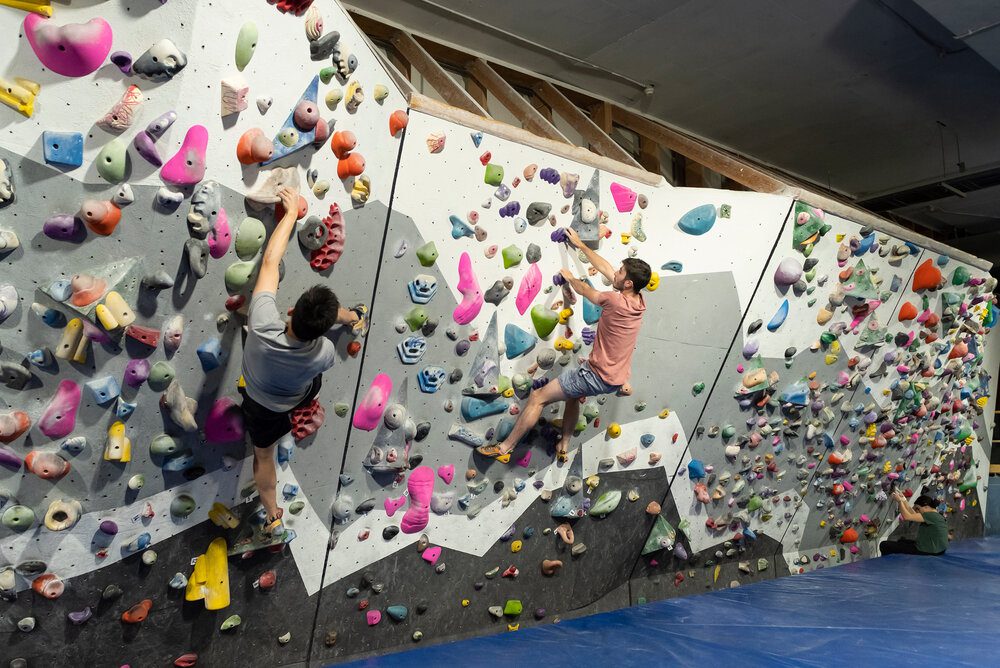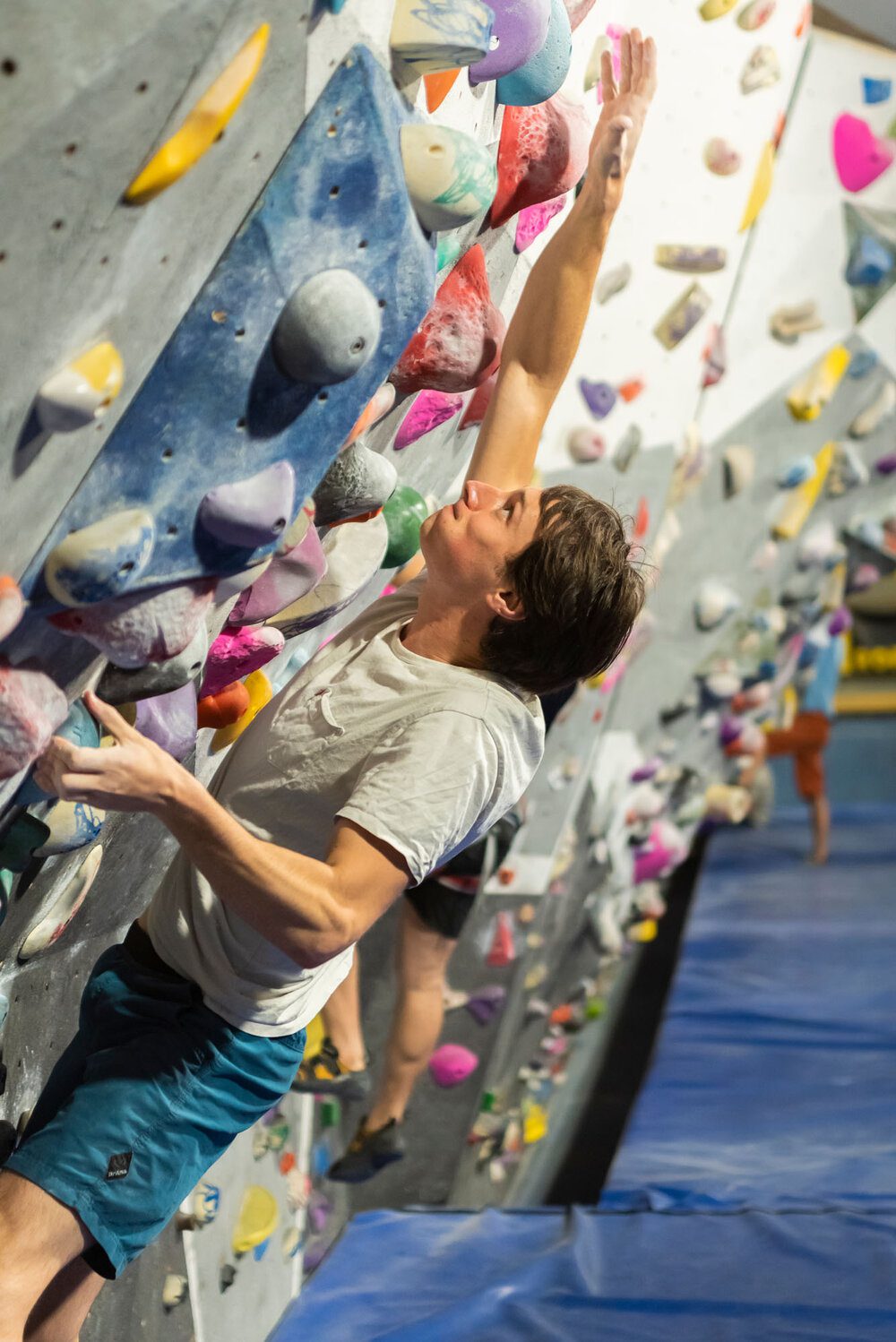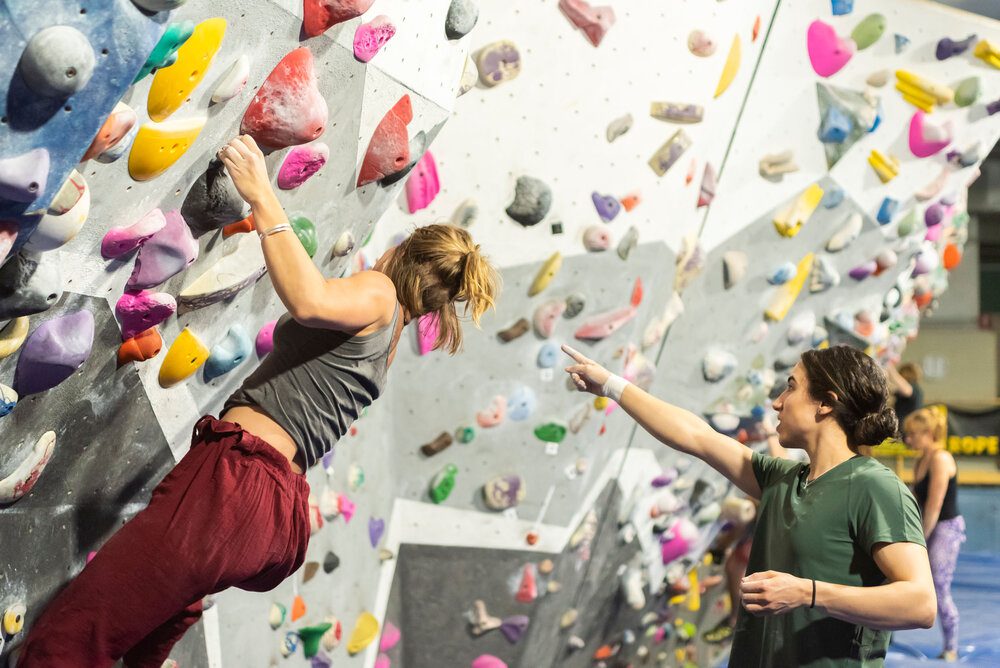
Whether you’re new to sport climbing or want to brush up on your route reading, learning how to read indoor rock climbing routes is an essential skill to have. In this guide, we’ll be teaching you some of the most important basics to know and also give you some in-depth knowledge that will have you analysing routes better and overcoming potential climbing problems with the greatest of ease.
We’re going to break it down into smaller sections and discuss some of the foundational skills you need to be successful at indoor rock climbing.
Before you embark on a route, the level of difficulty should be considered so that you tackle a challenge that is relative to your skill level. Rock climbing can be incredibly difficult if you’re not prepared, hence why you should understand the grading system of your climbing gym first.
>
“Climb Fit uses a simple colour-coded or number-graded system to make it easy to figure out how difficult a climb will be. There’s a little more to it, but typically the lower grades are a great range for beginners of all ages, whereas the upper grades will require some dedicated training and practice. Between here you’ll find a slew of approachable climbs to challenge your capabilities and start learning new styles.”
If you want to get a grasp of the more technical terms in regards to climbing grades, the Australian Ewbank system is also relatively straightforward to understand. It uses the numbers 1 to 36 to describe things such as technical difficulty, exposure, length, quality of rock, protection and other factors that could contribute to the grade.
A practical guideline when applying the EWBANK grading system in terms of indoor climbing dictates that if the route you’re climbing is rated a solid 20, you know you’re in for a challenge. Around grade 13-15 should be an excellent milestone to aim for as a new climber, but beginners should aim for double digits as a baseline and work their way up the different challenges.
A great way to learn fast and expose yourself to new challenges is to simply work on clearing all of the low-grade climbs first before moving on to the next. Don’t be too frustrated if the grade you’re climbing at isn’t on the same level as your friend or other climbers in the climbing gym. It can be fairly demoralising attempting the “easier” routes first, but even the most seasoned climbers enjoy the more accessible routes.
They climb them for fun, as a warmup and also to give advice to newer climbers. With practice, you’ll start to pick up new skills and climbing moves that can be applied in many different situations.
Remember, it’s all about building experience and learning different climbing styles so that you can use them in more challenging conditions.
Exposing yourself to the full spectrum of routes at the climbing gym is essential for helping you develop your climbing style and new techniques. You should be putting in maximum effort and applying yourself on each route that you attempt. If you go for something that’s too hard, you’ll develop bad habits and never refine your form. This is why it’s essential to do things under your skill level as often as practical. It allows you to try out new techniques, improve existing moves and also get more comfortable with climbing as a whole.
As long as you stick to something in your personal difficulty range, you’ll find that you can progress quickly and smoothly. Climb too many routes out of your league, and you’ll just get tired or fail to develop your skills as a climber. However, go for too many accessible routes and you’ll never adequately push your limits. Just follow the Ewbank system to determine your current level, then complete climbing routes around your skill level while gradually attempting new challenges.

One of the biggest mistakes new climbers make is to being climbing without even examining the route visually. Inspect the route on the ground and take note of some of the trickier challenges and problematic areas. The worst thing you can do is get straight onto the wall and start climbing instantly. This will only lead to confusion as you look for what to grab hold of next, and it’s the quickest way to fall if you’re not evaluating your route beforehand.
Take note of all of the holds on your route. Visualise where you’ll be climbing and get a good feel for all of the difficult sections that you’ll need to think twice about.
Once you go up, re-trace that route in your mind and try your best to get a good feel for the placement of all of the obstacles and components. If you fall, don’t get frustrated. Simply learn from your mistakes and your experiences up on the climb and try to build a new route, strategy or use different movements to overcome those challenges.
One of the essential terms to learn here is “beta”. In the world of rock climbing, beta is the word used to describe the information given from an experienced climber about a route. It can usually involve getting over certain obstacles and sections of the route or general advice on how to tackle it. This kind of information is essential for helping you complete a route with no prior experience, and you can always consult a more experienced climber for “beta”.
Some Expert advice from Steve Gardner, head coach, setter and owner of Climb Fit.
‘When you’re starting your climb, Begin with just your hands. Starting here will make the task feel less daunting. Look at the first 5 to 10 holds and try and work out the most efficient hand sequence.
Climb the first 5 to10 holds, come down and assess. Next is to attempt the next 5-10 holds intending to link both sections together.
Over time you should be able to recognise the optimal hand and foot positions while climbing a route. One of the more important qualities to look out for is the angle and position of specific components on the wall.
Look for parts on the climb that stand out like a hold that is a long way to the left. You can work out not only which hand goes next but, which side comes before the far left hold. Are there any holds that are facing one direction? You can then determine which hand you will grab it with next.’
These are vital components to helping you read and understand indoor rock climbing routes. As you ask for advice and visualise routes, you’ll start to piece together the optimal path for your skill level and abilities. Once you wrap your head around this concept of examining the route beforehand, you’ll have a much easier time planning future climbs and managing your stamina. Look for places where you have some bigger holds you may be able to rest and shake out with both hands or even just one.
When you are climbing, continually look ahead and focus on your intended sequence and determine if you may need to make some adjustments to it - route reading doesn’t just happen from the ground it happens as you climb as well.
Test your route. Try to remember the key points that you believed would be tricky and gather information as you climb about the conditions and components around you.
A key element is always to look ahead while you are climbing, don’t just look at your next hold when climbing, look and consider what your next planned move is. It’s far more efficient to look forward and take some time to work out your route rather than go too fast and get it wrong and then have to climb down a move or two.
By now, you should’ve had a couple of tries up on the wall. Perhaps you actually finished it on your first try, and you’re now celebrating. However, the more likely scenario is that you fell short of your expectations and slipped on a part that you thought would be easy.
When you playback the climb in your mind, you may need to consider the following scenarios;
Did you overestimate your arm length?
Was a section of the wall was trickier than you thought?
Maybe you just overestimated your ability?
Don’t get overly frustrated–this is all part of the learning experience!
Failing is going to be something you need to get used to. No matter how many routes you’ve successfully completed, you’re likely going to fail a route even if it’s a couple of levels below the grade that you’re capable of doing.
Perhaps there was a unique move that you’ve never experienced before, or maybe you just got overconfident and didn’t plan your route correctly. These are all entirely possible scenarios, so don’t beat yourself up over it.

Your route-reading skills will improve overtime as you take on a variety of different challenges, each of them presenting new obstacles for you to overcome and learn from
First, identify why you fell. Was it because of a tricky or challenging move that you didn’t expect, or was it because you just overestimated what you were capable of? Perhaps your approach to a specific section of the route was wrong, or maybe you didn’t shift your weight correctly.
This process of rinsing and repeating is time-consuming, but it’s one of the best ways to ensure that you’re able to complete a route and learn from it.
Your route-reading skills will improve overtime as you take on a variety of different challenges, each of them presenting new obstacles for you to overcome and learn from. As you build experience, you’ll start to see more successful climbs, more first-time route completions and even start offering new climbers beta.
Climbing gyms are a fantastic place to hone your skills and practice different moves. Still, you won’t make much progress until you start to become more self-critical and examine your movements while staying within the limitations of your abilities.
Build your strength, develop your route-reading skills and respect the rating systems in place to continually push yourself.